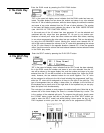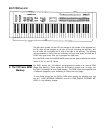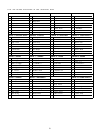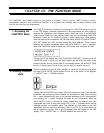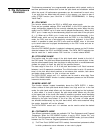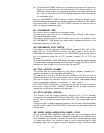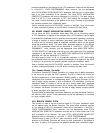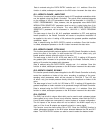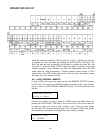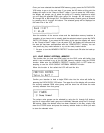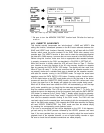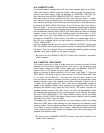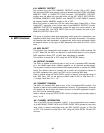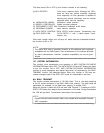
B15: TRANSPOSE
This function permits transposing the pitch of the entire DX21 keyboard up or down
two octaves in semitone steps.
The data range is from C1 to C5 (C3 is middle C, C2 is one octave lower than
middle C, C4 is one octave higher than middle C, etc.). Immediately after this
function is called the desired new key can be selected simply by pressing any note
on the keyboard between C1 and C5 (within a plus or minus two octave range
of middle C). The keyboard’s C3 key then assumes the pitch of the key played,
and all other keys are adjusted automatically. Pressing any key higher than C5
on the keyboard results in a transposition to C5. This method of data entry can
only be used once, immediately after the TRANSPOSE function is called. Further
alterations may be made using the DATA ENTRY control or switches.
KEY SHIFT: KEY SET
During any of the normal DX21 play modes, pressing the KEY SHIFT button instantly
transposes the pitch of the entire DX21 keyoard up or down to a key programmed
using this function. When KEY SHIFT is engaged the letter “K” will appear at the
upper left corner of the LCD display until the KEY SHIFT button is pressed again,
returning the keyboard to normal pitch.
Pressing this button in the FUNCTION mode permits programming the desired
pitch to be shifted to when the KEY SHIFT button is pressed during any of the
play modes.
The transpose range for the KEY SHIFT function is plus or minus two octaves. The
data range is from -24 to +24, with 0 corresponding to standard keyboard pitch.
Each increment corresponds to a shift in pitch of one semitone—a setting of 2 would
therefore raise the pitch of the entire keyboard a whole tone.
Immediately after calling the KEY SET function, data can be entered simply by
pressing a key on the keyboard within a plus/minus two octave range of C3 (middle
C). The pressed key then assumes the pitch of C3 and all other keys are adjusted
accordingly. Pressing the A2 key, for example, produces a setting of -3. Pressing
a key higher than C5 results in a +24 setting, and pressing a key lower than C1
results in a -24 setting. This method of data entry, however, can only be used once
after this function is called. Subsequent changes can be made using the DATA
ENTRY control and -1/+1 switches.
This group includes just two functions: MASTER TUNE and DUAL MODE DETUNE.
4. Tuning Functions
A1: MASTER TUNE
This is the DX21 MASTER TUNE function. All voices are affected simultaneously.
The programmable data range is from
-63 to +63. When set to +0 the pitch of
the A3 key is the standard 440 Hz. At the lowest setting of -64 the overall pitch
of the keyboard is 100 cents (1 semitone) lower than standard pitch, and at the
highest setting of +63 the overall pitch of the keyboard is 100 cents higher than
standard pitch.
Use the DATA ENTRY control or -1/+1 switches to enter the data for this parameter.
Once the MASTER TUNE function is called, subsequent presses on the A1 button
increment the data value.
A2: DUAL MODE DETUNE
This function makes it possible to detune the pitches of channels A and B to create
chorus-type effects. DUAL MODE DETUNE only functions when the DUAL play
mode is selected.
The data range is from 0 to 99. At 0 no detune effect is produced. The greatest
(deepest) detune effect—a pitch difference between channels A and B of approx-
14



